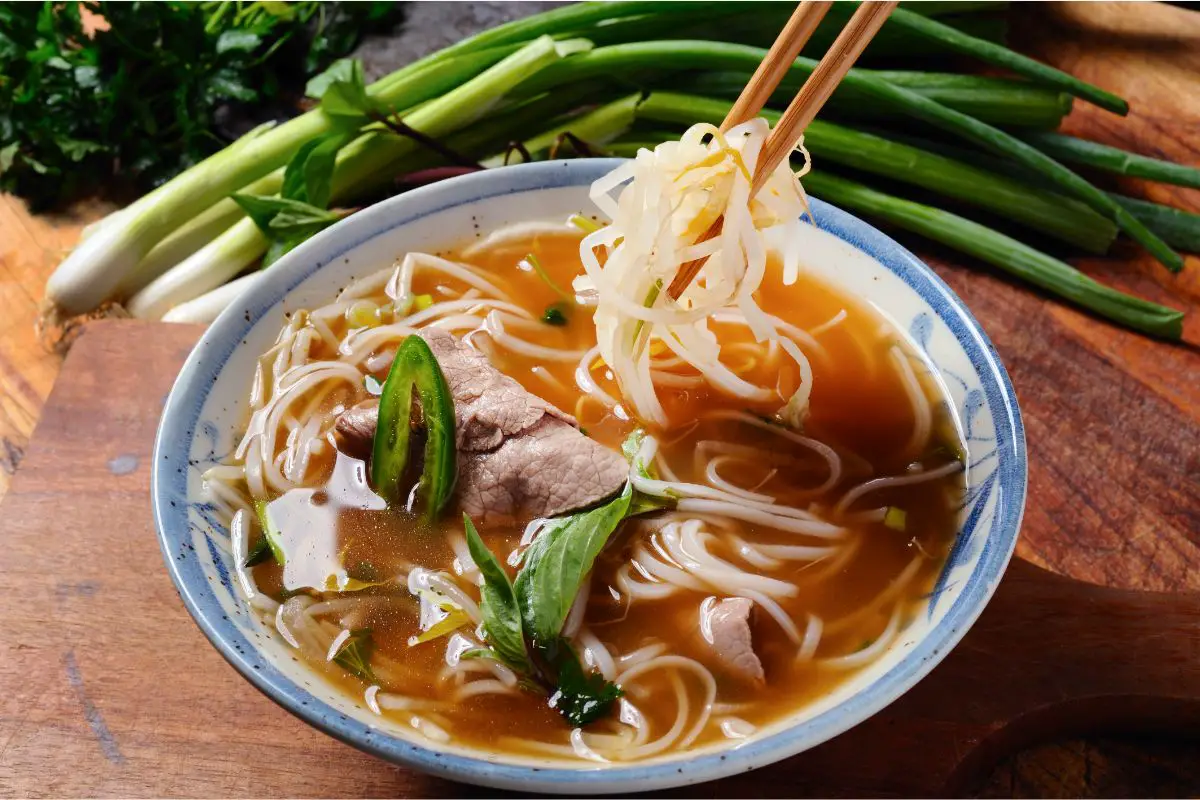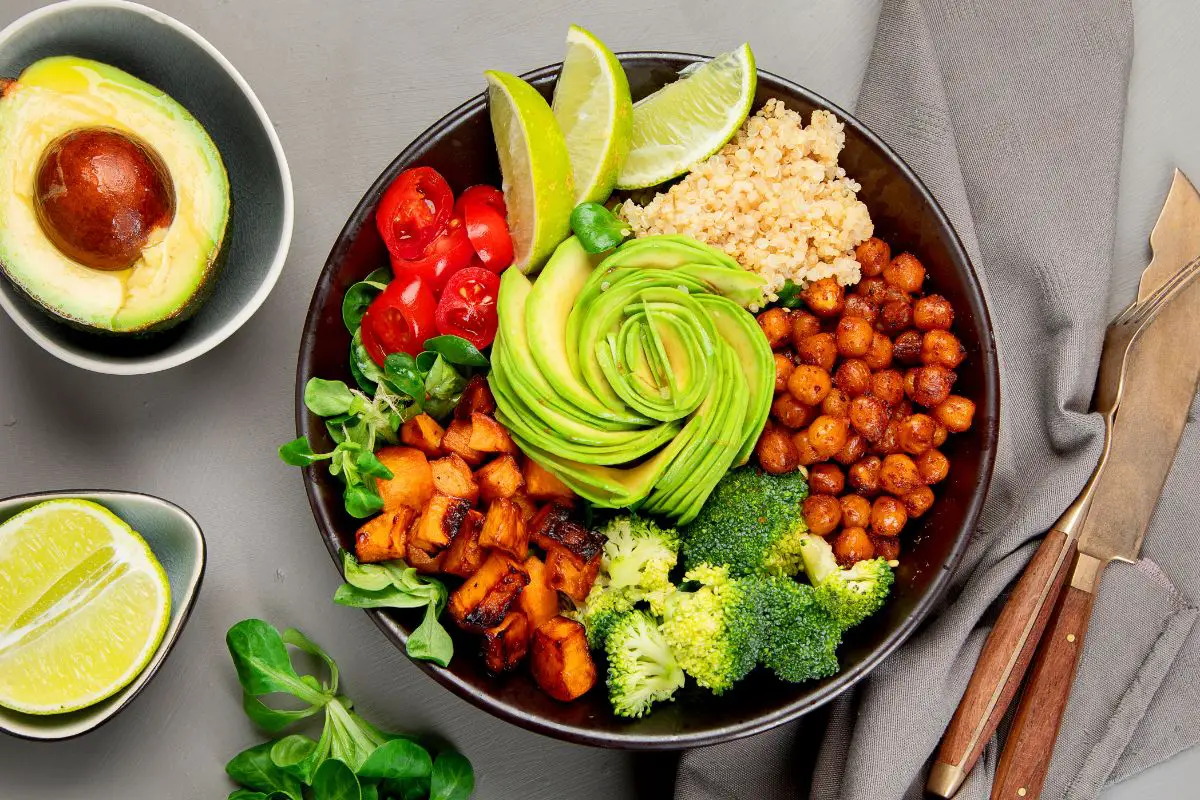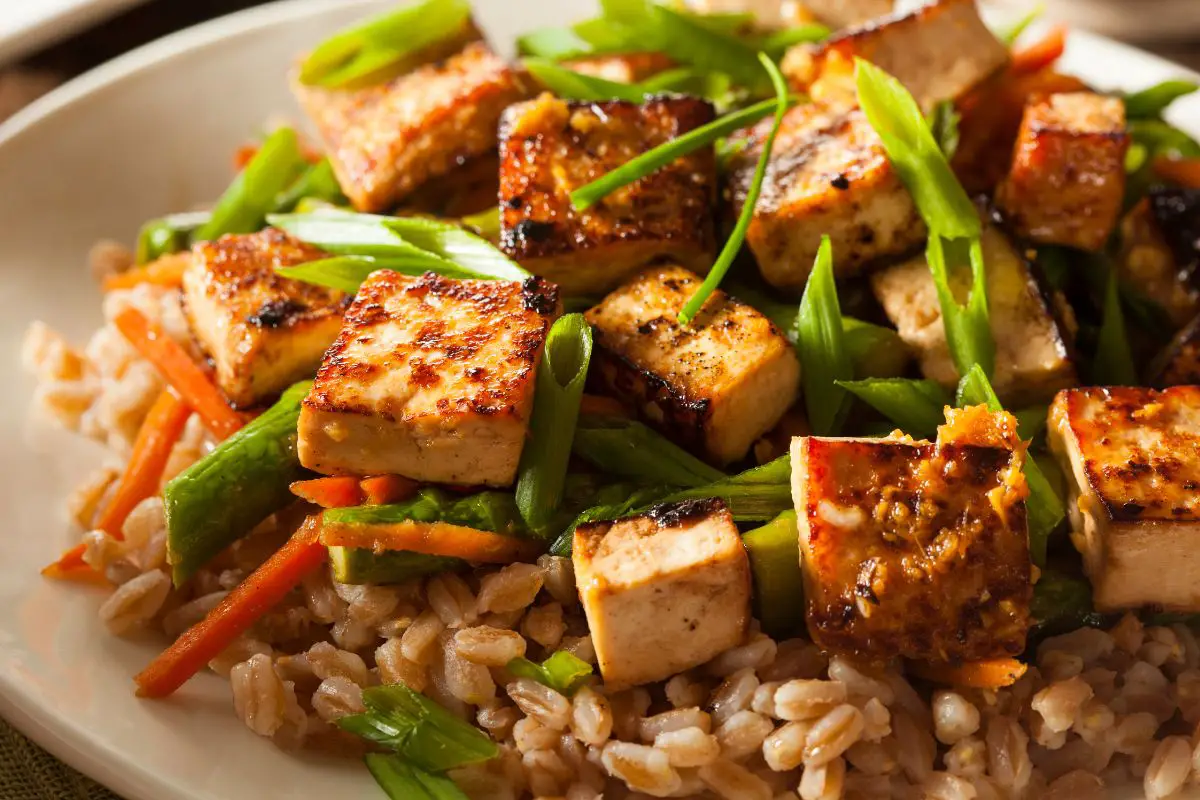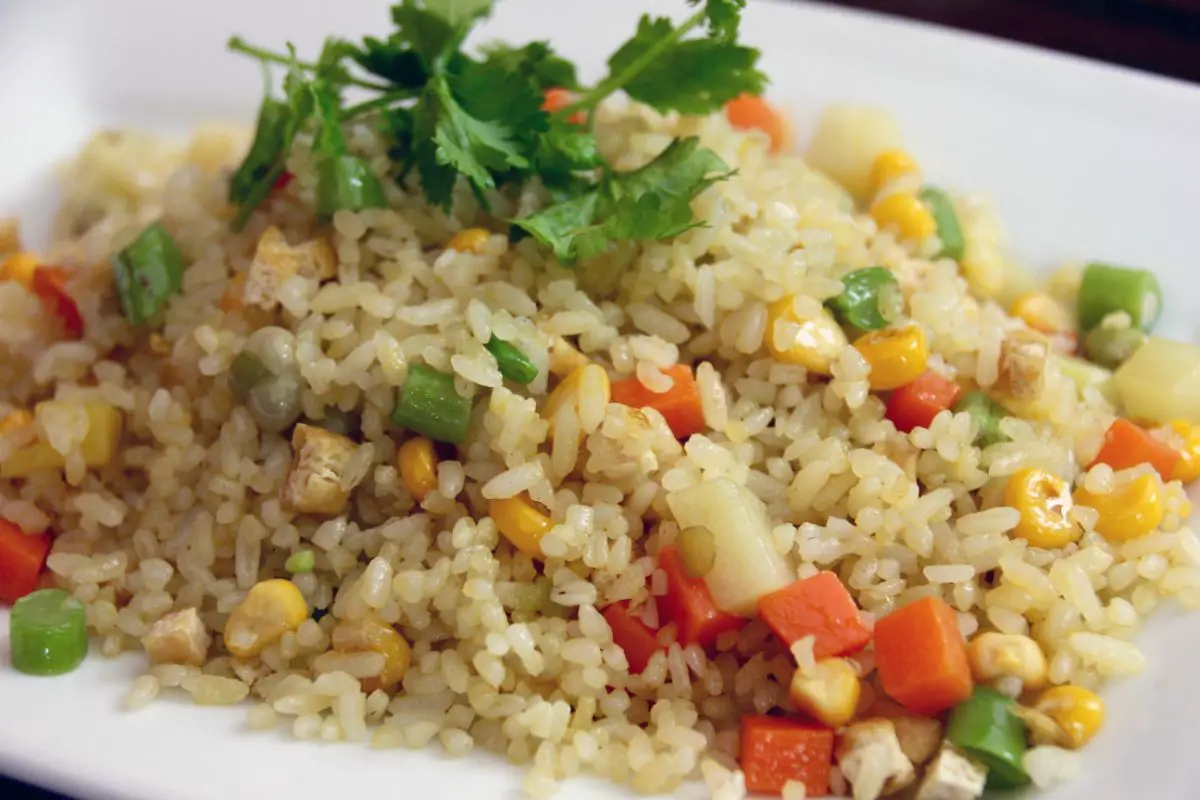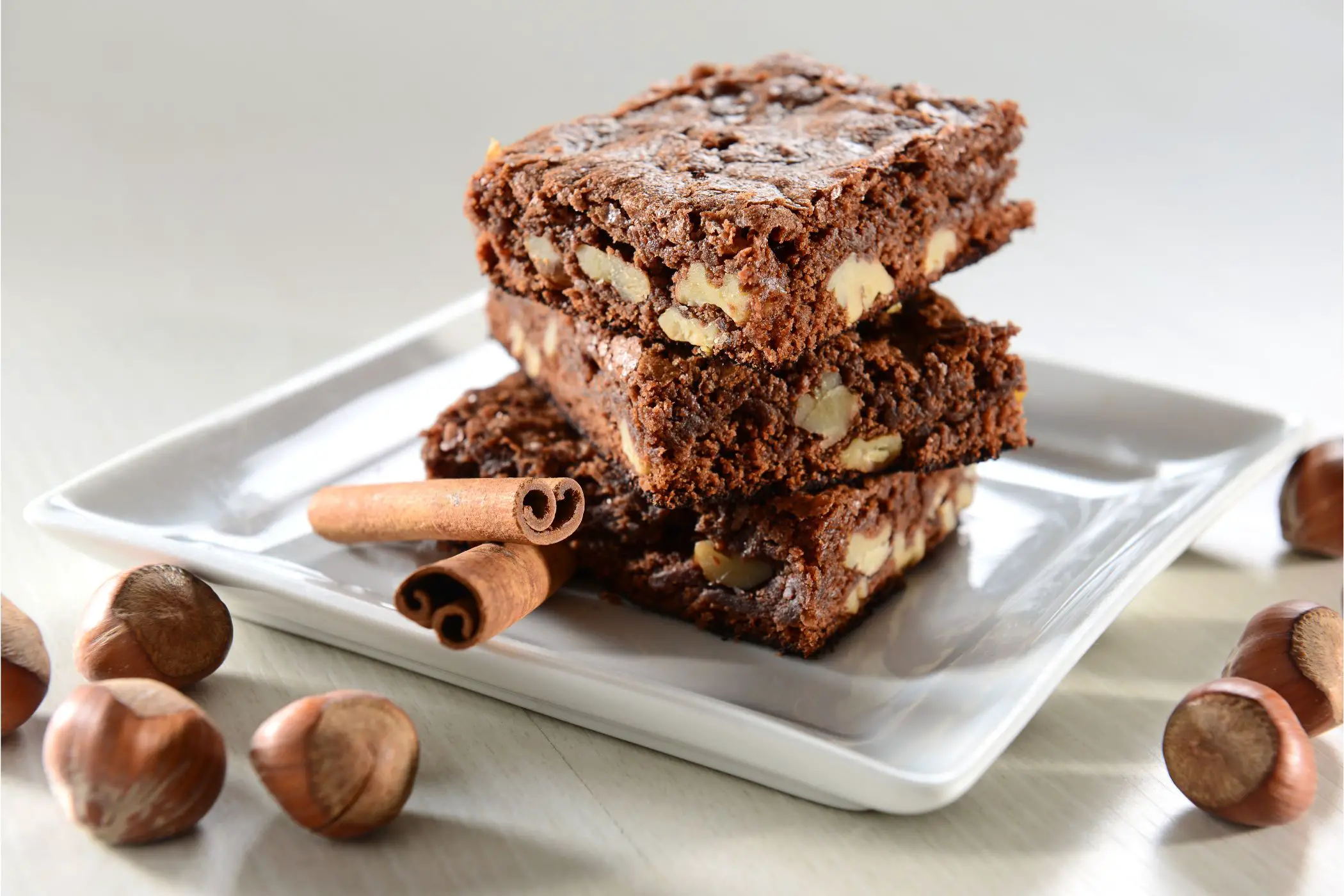Going veggie or vegan means saying goodbye to a lot of tasty foods for the greater good, but thankfully, Thai curry isn’t one of them — Phew!
With a couple of intelligent substitutions, this amazing meal (definitely in my top 5) can be made completely cruelty free without losing even a fraction of its spicy, creamy goodness!
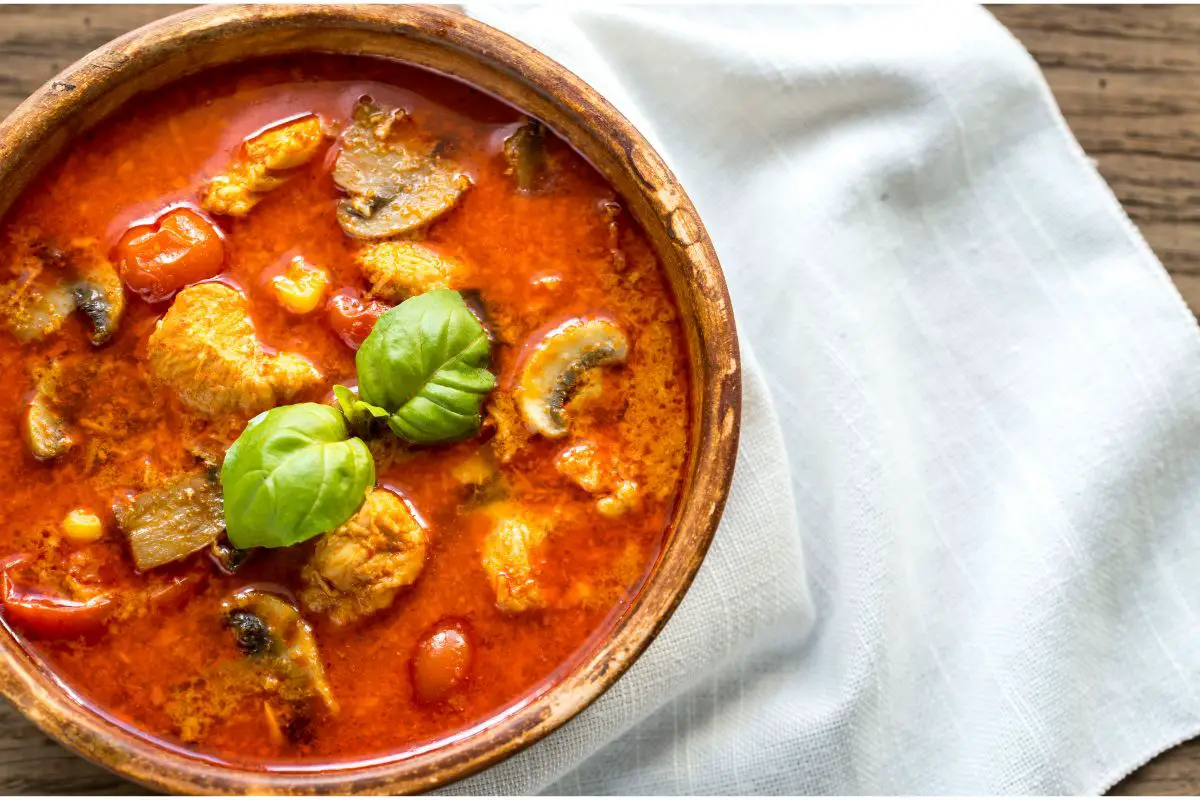
It’s also great for batch cooking if you’re hoping to freeze some excess for fast, easy, delicious eats in time-sensitive situations or when you’re having a day and you simply can’t be bothered to rustle something up from scratch.
That said, this meal doesn’t take long to whip up at all — We’re talking 30 minutes max.
Made with your choice of tofu, plenty of red Thai curry paste, and of course a generous pour of coconut milk, you can be sitting down to eat this simple dish in record time!
Reasons To Give This Recipe A Chance
If you’re anything like me, you won’t need any encouragement to give a Thai curry recipe a go.
then another, and another, and another, and so on, but for those on the fence, here’s why you should consider Thai coconut curry tofu for dinner tonight.
Fast Food
As mentioned earlier, you’ll have this meal dished up on your dinner table in 30 minutes or less, so you can silence that grumblin’ tum of yours post haste!
Takeout-Grade Tastiness
Your favorite Thai take-outs don’t have any secret sauce or special technique that makes their Thai coconut curry any better than this recipe. Save yourself some money and make this impeccable meal yourself at home.
Open-Ended
Simple recipes aren’t just great for impatient eaters, they’re also fantastic for imaginative eaters who like to experiment with their meals.
Thai coconut curry tofu provides the perfect basic canvas for you to embellish however you like. Got a favorite veggie? Toss it in there. Like it mild? Pour in some soy cream or add less curry paste… the wok is your oyster!
What Tofu Should I Use?
Personally, I’m team extra-firm tofu all the way when it comes to Thai coconut curry, but there are no wrong answers here.
Simply choose your favorite type of tofu and get cookin’. And don’t worry if you’re not sure how different types of tofu will impact your meal, as I break down the key differences below:
Soft Tofu
Often referred to as silken tofu, soft tofu is, you’ve guessed it… soft. It’s also quite delicate and crumbly, so unless you want to break it apart to thicken or add texture to your curry, it pays to handle it with care.
Medium Tofu
Medium tofu is essentially the same as soft tofu in terms of texture, but it’s not quite as crumbly, so you can throw it right into the pan with all your other ingredients and it won’t break down.
If you like soft, smooth tofu, but you’re after an easy cook, medium tofu is the one for you.
Firm Tofu
Should you be craving some crispy tofu, then, at the very least, you’ll need firm tofu. Though do bear in mind that it usually retains more water than softer varieties of tofu, so you’ll need to account for some extra pressing time.
Super-Firm Tofu
Throw some super-firm tofu into your pan before adding your veggies, and it’ll get lovely and crispy and give you something substantial (almost meaty) to chew on!
What Ingredients Will You Need For Thai Coconut Curry Tofu?
As I mentioned earlier, this is a very open-ended meal, meaning you can add and subtract ingredients to suit your mood, but below you’ll find my suggestions for a first try:
Red Thai Curry Paste
Vegans and veggies beware!!! Some red Thai curry paste contains shrimp paste. There are plenty out there that don’t, but do be sure to check the jar for clarification.
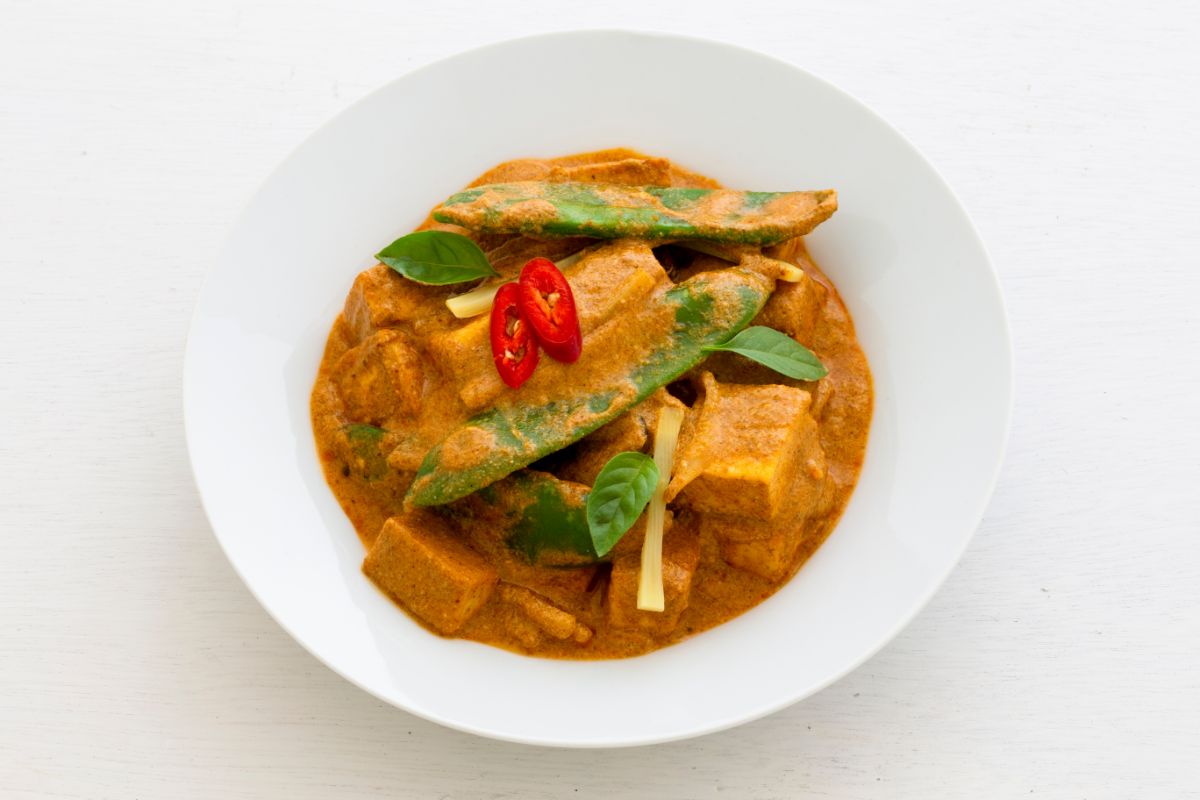
Coconut Milk
Coconut milk is to Thai food what chopped tomatoes are to Italian food. It combines with the Thai paste to form the saucy base of the meal. You can choose a light version if you wish, but I’m a sucker for full fat!
Coconut Sugar
This is a pretty niche ingredient, so you may not be able to get your hands on any right away, but not to worry, as this stuff is essentially just a sweetener and can be replaced by any number of things.
My favorite alternative is brown sugar, but agave nectar works great as well.
Avocado Oil
Again, this isn’t an everyday ingredient, but if you can find some, it does add that extra something special to the final product; however, any high smoke point oil will do the trick — I’d recommend vegetable oil as a plan B.
Lime
Lime may not be the most popular fruit, even within the citrus family, but wanna know a secret? It makes a dynamite pairing with Thai curry paste (especially red Thai curry paste!).
Whether I’m making this dish, Thai noodles, or even a Thai veg hotpot, your boy’s gonna be adding a generous drizzle of lime juice!
Fresh juice squeezed from a lime is best, but if you’ve only got some bottled lime juice, go for it.
If you haven’t got any limes to hand, lemon juice will fill the void in a pinch, but it doesn’t share quite as much synergy with the flavorings in the red Thai paste.
Paprika
Paprika isn’t going to be a forefront flavor, but a subtle smokey accent does add a little more nuance to the meal.
It also kicks the vibrancy of the red hue up a couple of notches, and as they say, people eat with their eyes first, so it’s worth considering.
Soy Sauce
Ah, soy sauce, one of the purest things in this world. Traditionally, fish sauce is used in Thai curries (Also check out Thai Massaman Curry), but soy sauce is an excellent vegan alternative.
It’s not always gluten-free though, so if you’re celiac or just a little gluten intolerant, look for one that specifically says it’s gluten-free.
Cooking Thai Coconut Curry Tofu: A Step-By-Step Guide
That’s enough of a preamble I believe. You’re hungry, I’m hungry… let’s get to the cooking process already!
Step 1 Pressing Your Tofu
If you’re new to the world of tofu, you may not realize that it’s stored in and permeated by water, but you can’t just wring it out as if it were a towel, as even Super-firm tofu would fall to pieces.
Ideally, you’ll use a tofu press for this job, but no worries if you don’t have one (I don’t), as all you need are a couple of pieces of absorbent material and something relatively heavy.
I like to use kitchen towels as the absorbent material and a few of my cooking books as the weight. Here’s how it goes.
- Fold up one kitchen towel and lay it on your countertop.
- Open your tofu, and squeeze as much water out with your hands over your sink as you can without breaking it.
- Place it on the towel.
- Fold up your second towel and drape it over the top of the tofu.
- Stack your cooking books (or alternative heavy items) on top of the towel and leave everything to sit for 30 minutes if you have the time. 10 minutes will suffice if you’re in a rush.
Step 2 Chopping Your Tofu
You can cut up your tofu however you like, but generally speaking, the easiest and most common approach is to cube it.
As for the size of these cubes… whatever you think will work best, but I aim for just bigger than Quorn chicken chunks.
Step 3 Crisping Your Tofu
Grab your high smoke point oil, pour three to four tablespoons in your wok, heat it for 1–2 minutes on medium-high heat, then cook your tofu chunks for around 3–5 minutes, until they’re golden brown on each side.
Step 4 Gettin’ Saucy!
Set a new pan on a medium burner and add your red Thai curry paste. Allow roughly 20–40 seconds for it to simmer, then crack open your coconut milk and pour the whole can into the paste pan.

Allow it to reach boiling point, and observe as it reduces, stirring frequently. When it seems noticeably thicker, add two tablespoons of soy sauce, 1 ½ teaspoons of coconut sugar, half a lime of lime juice, and half a teaspoon of paprika. Stir until everything blends together in colorful and fragrant marriage.
Step 5 Bring It All Together
Spoon your tofu from the other pan into your saucepan and stir as your sauce continues to reduce and coats the tofu.
You don’t want it to be so thick that you can’t see the white of the tofu through the sauce, but you definitely want a good coat.
Step 6 Sides
You’ll have noticed I didn’t mention any sides in my ingredients list, and that’s because this meal is so versatile that your options are basically limitless. Still, if you want my advice, you just can’t beat some jasmine rice.
Step 7 Serving It Up!
Serve your Thai curry and sides together in a deep bowl, perhaps with an extra lime segment so you or your co-diners can tailor the tang-factor to your tastes.
I also like to sprinkle on some torn fresh cilantro as a garnish, but any greenery will do. If you’d rather something a little less invasive taste-wise, pea shoots are a good, cheap option.
A Vegetable Lover’s Delight
Remember earlier when I mentioned that this meal is very much a culinary blank canvas?
Well, I really meant it! No matter what your favorite veggies are, they’ll go down a storm with this recipe. In fact, if you don’t have any tofu, just load it up with veggies instead!
To give you a little bit of inspiration, here are all the vegetables I’ve tried (and loved) with this recipe:
- Broccoli
- Green beans
- Sweet potato
- Carrots
- Bell peppers
- Cauliflower (spiced if you’ve got the time)
- Mushrooms
- Bok choy
- Kale
- Bamboo shoots
- Eggplant
- Zucchini
I Made Too Much Red Thai Curry, What Do I Do?
Saving leftovers of this meal couldn’t be easier. Just grab an airtight container, fill it with curry, pop the lid on, then store it in your fridge for up to 3 days. If you’re forgetful with food, put it in an obvious space and label it with today’s date.
Should you wish to save it for longer than 3 days, cover the leftovers and allow them to cool, decant them into airtight containers, lid them, label the tub with today’s date, then place them in your freezer. They’ll be good for 2 months.
When you feel the hankering for Thai curry return, defrost it in your fridge overnight then reheat in a pan or in a microwave.
Thai Coconut Curry Tofu: Expert Insights
- As is always my suggestion, use a good quality non-stick pan to get the most out of your ingredients and make the cooking process easier on yourself.
- For a more traditional experience, don’t allow the sauce to thicken too much. Thai curries are typically quite watery (but packed with flavor).
- Tofu is a strange beast. It’s like a sponge, and it will soak up moisture and “uncrisp”, so if you’re after that super crunchy texture, don’t let it sit in the sauce for too long. Better yet, serve your tofu up separately, then dip it into the sauce before eating it.
- If you’re adding lots of vegetables, be sure to cook them off in a separate pan before adding them to the sauce, otherwise, they may not all cook evenly.
Frequently Asked Questions
Is Coconut Milk Used Mostly In Thai Or Indian Dishes?
Both! Coconut milk is a staple ingredient of Thai and Indian cuisine, but it’s definitely more prevalent in Thai cooking, as Indian recipes often utilize cream or a special type of butter known as ghee instead.
Can I Add Tofu Directly To The Curry?
You do not need to cook the tofu in a separate pan before adding it to the curry, especially if you’re using soft or medium tofu, but for the firmer stuff, I think crisping it up in a pan first makes all the difference.
Will I Like Thai Coconut Curry If I Don’t Like Coconut?
Most likely, yes. I’m not a huge fan of coconut myself, but here’s the thing, you don’t necessarily taste any coconut at all. The coconut milk simply provides the base liquid for the curry paste to travel in, and that’s what you’ll be tasting.
What you will find though, is that the more coconut milk you pour in, the more subdued the spices and flavors of the paste become.
Can Red Thai Curry Paste Be Substituted With Curry Powder?
Unfortunately, no, you cannot switch up the red Thai curry paste for generic curry powder in this recipe.
For one, they’re composed primarily of different spices (or different amounts at the very least), and for two, paste packs more flavor than powder and cooks into food rather than simply coating it.
Final Thoughts
This recipe proves that you don’t have to spend big bucks at a takeout to enjoy some crazy delicious Thai cuisine, and neither do you have to slave away over a hot stove for hours to attain professional-grade flavors.
As long as you have the correct core ingredients and follow the step-by-step guide provided above, you’re in for a tasty, authentically Thai, veggie/vegan experience! Bon appétit, or as they say in Thailand, “Than hai im, na khrap!”
- How To Make A Paleo Detox Smoothie: Berry Cherry Green Edition - April 18, 2023
- How To Make Spicy Paleo Paprika And Thyme Veggie Fries - April 18, 2023
- 15 Mouthwatering Keto Apple Recipes You Need To Try Today - April 18, 2023




